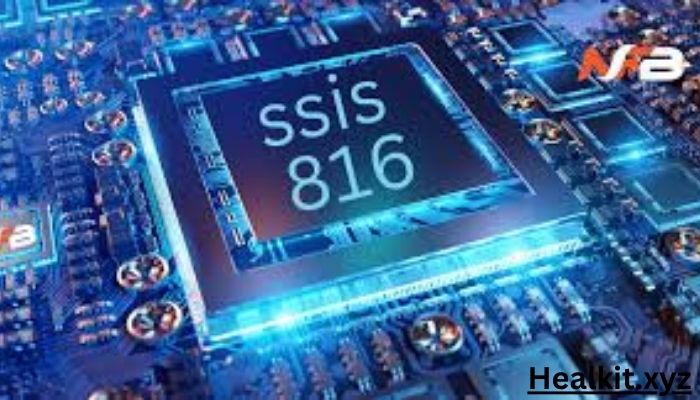In this ever-changing digital landscape, it is very important to have effective data integration and management systems. SQL Server Integration Services (SSIS) has become a major platform in this field, providing strong solutions for intricate data issues. The revealing of SSIS 816 in 2024 ushers in a new wave of innovation which builds on the achievements made by its predecessors and adds new advances and functionalities that change everything. This comprehensive guide explains various aspects of SSIS 816, enabling professional experts and enthusiasts to dive deep into how it works, its improvements, and practical applications within today’s data-oriented world.
Key Concepts in SSIS 816: Unravelling the Essentials
It is essential to understand the basics of SSIS 816 to make the most of its capabilities. These basics encompass packages, connections, control flow, data flow and event handling. Packages are places where you can organize and perform workflow operations, while connections define where data comes from and goes. Control flow defines how tasks are order on a timeline, while data flow handles the movement and manipulation of data within the package.
In addition, event handlers enable users to deal with various events during runtime, such as errors or incomplete tasks. A good command of these basics is necessary when applying SSIS 816 in real-life situations. Additionally, studying them equips individuals with skills like streamlining ETL processes and improving productivity levels through automation, among others.
Functional Applications and Benefits
In streamlined data warehousing, data is organized in warehouses so companies can merge and study information from different sources. This will enable a company to uncover the unknown about its business operations, consequently making better choices.
Efficient ETL Processes are essential for data integration, and SSIS 816 improves this process through intuitive design tools and improved performance capabilities. Businesses may reduce overhead by optimizing ETL workflows and improving the accuracy/timeliness of data.
Enhanced Business Intelligence: SSIS 816 allows organizations to improve their business intelligence capabilities by integrating and converting actionable insights from multiple sources of information. It provides key resources for extracting valuable knowledge from raw data, e.g., analyzing customer behaviour, monitoring sales trends, or predicting market demand.
Improved Data Accessibility: With timely delivery of accurate information, SSIS 816 enables organizations to use real-time information for decision-making purposes. These include responding to market changes, streamlining operational processes or identifying learning opportunities that can create value for any business.
The Enhanced Services and Features of SSIS 816 Capabilities for Data Integration and Transformation SSIS 816 has done so much to its data integration and transformation features to prove that the company is committed to staying on top of the game regarding technological advances. This latest update introduces several new tools and functionality to simplify complex user data integration operations. For instance, there will be new ways by which SSIS 816 will supplement existing functions with creative solutions to handle abundant types of data sources and formats, thus ensuring their compatibility and flexibility in all alterations.
Enhanced Scalability and Performance
In a world where data-driven processes dominate, ensuring optimal performance and scalability is very important. The need for these has brought about notable improvements with SSIS 816 in dealing with huge data sets and complex data transformations. Efficiency rises considerably, and this also facilitates the smooth running of large-scale operations on data. We will now delve into the technical advancements supporting these enhancements, which will help us understand how they boost the ability to handle massive amounts of data.
SSIS and Data Integration’s Future
The future look of SSIS and the data integration front seems to beare headed for transformation and is influenced largely by lightning-fast progress in cloud computing, artificial intelligence, and real-time analytics. With each new day, these technologies push the envelope further, opening a new era of data management with better capabilities and efficiency. In the next few years, we expect SSIS to embrace them fully as they come and integrate them into cutting-edge features that are more intricate and flexible enough to meet the changing needs of contemporary businesses in this digital age. This evolution will equip organizations with the resources needed to succeed in an ever-increasingly complicated world governed by data, enabling innovation and fostering growth at previously unimagined levels.
Conclusion
Data integration and control have reached a milestone in SSIS 816. This results from long-term technological advances, user input, and a profound understanding of modern business data needs. Increased functionality, better productivity, and emphasis on user experience make SSIS 816 more than just software but a comprehensive solution to the wide range of data integration challenges. It’s clear that looking forward, SSIS will be key in shaping the data management and analysis domain, leading to more innovations and improvements in future. Read More
